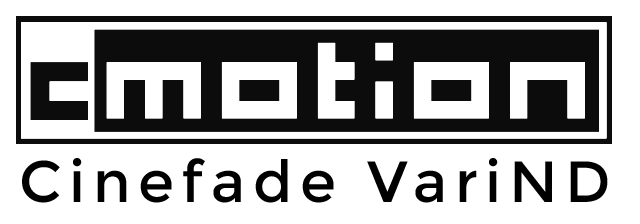Combining Cinefade with a Dolly-Zoom shot
Cinefade allows cinematographers to vary depth of field in one shot at constant exposure. The gradual transition between a deep and a shallow depth of field can be used to accentuate a moment of extreme drama.
The Cinefade shot is often compared to the Dolly Zoom shot, also known as the Vertigo effect, Trombone shot or Zolly amongst many others. Although it is technically different, the comparison refers to the narrative motivation behind applying one of the two shots in a film: Accentuating a pivotal moment in the narrative.
The Cinefade works by opening and closing the iris to vary depth of field and using the cmotion Cinefade VariND to automatically keep exposure constant. The system is remotelycontrolled with a cmotion cPRO system.
One of the most well-known examples of the Dolly Zoom is in a pivotal scene in Steven Spielberg’s Jaws (1975) shot by Bill Butler, in which Chief Brody realizes there is a shark in the water attacking swimmers. The moment is accentuated by a Dolly Zoom and communicates a heightened sense of awareness as well as highlighting the horror that the character feels. A Cinefade shot could have been used in that scene instead of the Dolly Zoom shot with arguably similar effect.
The really interesting question however is: “What if you combine a Dolly-Zoom shot and the Cinefade effect?” Surely the two in-camera effects combined would look mind-blowing!
To find out, Cinefade’s Founder Oliver Janesh Christiansen teamed up with Tomi Keeling from Mark Roberts Motion Control to combine their technologies and test out a cinematic first.
An Arri Amira and an Angieneux 18-80mm T2.2 lens were setup on a Milo motion control rig with the Cinefade system attached.
The Milo rig would dolly from 1m to 5m while zooming from 18mm to 80mm to achieve the Dolly Zoom effect. At 18mm the Cinefade effect would start at T16 to achieve maximum depth of field an then gradually transition to T2.8 at 80mm. See the results below, compared to a ‘normal’ Dolly Zoom shot at T16.
DOLLY ZOOM CINEFADE SHOT
With the two clips side-by-side it is clear that the version with the Cinefade effect has more impact and is more aesthetically pleasing.
The transition between a shot where the character is hyper-aware of his surrounding world at a wide focal length and maximum depth of field to a shot where the character’s world closes in on him with a long lens and blurry background is extreme.
As a cinematographer you also don't have to compromise between a shallow depth of field look when combining a Dolly Zoom with a Cinefade effect, as you can achieve the best of both worlds.
Arri Amira with Angieneux 18-80mm lens
Dolly: 1m – 5m
Zoom 18mm – 80mm
Cinefade: T16 – T2.8
Dof: 12.6m – 0.41m
Out of interest, we also reversed the Cinefade effect to see what the Dolly Zoom would look like when the depth of field starts out shallow and ends up deep at the long end.
Arri Amira with Angieneux 18-80mm lens
Dolly: 1m – 5m
Zoom 18mm – 80mm
Cinefade: T2.8 – T16
Dof: 0.34m - 2.48m
Although it does not add anything to the effect and is arguably not a pleasing look, it does offer the possibility of keeping the depth of field constant throughout the Dolly Zoom range if the parameters are set correctly, which may be useful to keep two actors in focus throughout the shot.
Let us know your thoughts and suggestions in the comments or via email. The Cinefade effect is a new storytelling tool and we are always open to experimentation.


